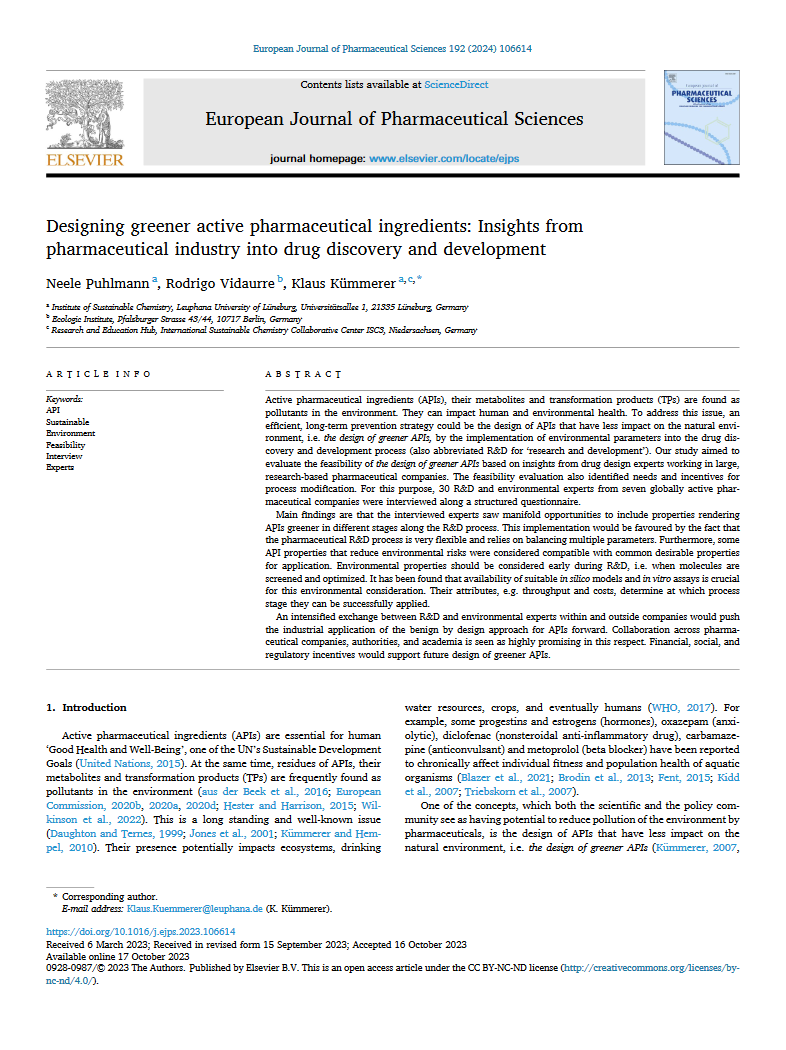Design of Greener Drugs
Aligning parameters in pharmaceutical R&D and drivers for environmental impact
- Publication
- Citation
Vidaurre, Rodrigo et al. (2024): Design of greener drugs: aligning parameters in pharmaceutical R&D and drivers for environmental impact. Drug Discovery Today, Volume 29, Issue 7, doi: 10.1016/j.drudis.2024.104022.
The article "Design of greener drugs: aligning parameters in pharmaceutical R&D and drivers for environmental impact" published in Drug Discovery Today explores the challenges and opportunities in developing pharmaceuticals that are not only safe and effective for patients but also environmentally sustainable. This open access article – written by a cross-disciplinary team with representatives of universities, regulators, research-based pharmaceutical companies and SMEs – identifies the most promising areas for action in pharmaceutical research and development. It specifically aims to bridge the scientific concepts used by the expert communities in both environmental science and pharmaceutical R&D.
Environmental Concerns and R&D Integration
Currently, in pharmaceutical R&D environmental characteristics are not typically considered. The article discusses four main drivers of environmental concern (persistence, mobility, bioaccumulation, and ecotoxicity) and their interlinkages with parameters relevant for pharmaceutical R&D such as metabolic stability and lipophilicity. The compound properties that are sought in pharmaceutical R&D and those that determine their behaviour in the environment are mutually interrelated, presenting both challenges and opportunities to the design of greener pharmaceuticals.
Opportunities and Implementation
Implementing greener drug design requires the development of predictive in silico tools and high-throughput screening methods to assess environmental impacts early in the R&D process. The article suggests that focusing on reducing environmental persistence is a practical starting point. Improvement in environmental degradability can reduce environmental exposure, and with that it also reduces the environmental concerns related to the other three drivers of environmental concern (mobility, bioaccumulation, ecotoxicity).
Additionally, the paper emphasizes the potential benefits for pharmaceutical companies of including environmental considerations in their R&D processes, including proactive management of potential reputational risks, better market positioning in a changing society, and compliance with evolving environmental regulations. The article can be accessed here.
